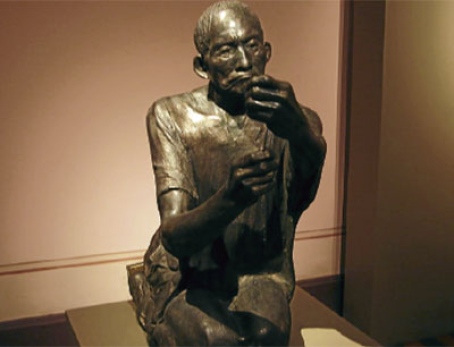Homage to sons of our land
IMMORTALISED: Sculptor Felipe Lettersten pays tribute to “beautiful human beings” of the Americas
IN the old colonial part of San Juan in Puerto Rico, perched on a tall commemorative column is the monument of Christopher Columbus, or better known as Cristobal Colon in the country.
Erected at the centre of the quadrangular Plaza Colon, or Columbus Square, it marks the beginning of the country’s Spanish history associated with the well-known, if controversial, explorer some 500 years ago.
Following the end of the Spanish occupation, the United States “won” Puerto Rico and the Philippines. The former remains part of the US until today.
Long before Columbus set sail across the Atlantic, natives such as the Tainos were already living on the island of Puerto Rico.
Some claimed this was as early as the first century CE. This was made abundantly clear in an exhibition at Museo de La Americas depicting 22 ethnic groups that survived European conquest and colonisation.
The most recent permanent display in the museum aimed to pay homage to the first settlers on the American continent, its survivors, including the Tainos.
The exhibit is said to be by far the most complete on the so-called “Indians” (no thanks to Columbus’ ignorance) as the earliest discoverers and inhabitants of Columbus’ New World.
This is made possible by Peruvian-born sculptor of Swedish descent, Felipe Lettersten, who devoted a lifetime of work to the preservation of distinct cultures that define a group of people whom even the Americas have not come to know.

One of Felipe Lettersten’s sculptures. — Picture courtesy of arie-travels.blogspot.com
The ethnic groups encountered threats and obstacles during the brutal conquests and colonisation by the Europeans, including the Spaniards, Portuguese, English, French and Dutch. Lettersten tries to capture what he can of the spirit of native American people before it disappears, especially when there is no respect for land or sacred beliefs.
The Tainos are a good example since they remain only as a distant expression of Puerto Rican indigenous people and are said to be extinct as a distinct group. So too are their culture, values and artforms.
We owe much to Lettersten who travelled up and down the Americas, notably the Amazon River and its tributaries, to trace the otherwise forgotten natives.
He also immortalised them in sculptures set in their own natural environment, be it in the Caribbean or the American continent considered the last to be inhabited by humans some 15,000 to 20,000 years ago.
Yet their numbers are fast dwindling to as low as 500, in the case of the Kamayura community near Xingu River in the Amazon, and to some 200,000 Navajos in the United States.
Lettersten dedicated a collection of 212 sculptures entitled Sons of Our Land to honour the indigenous cultures, languages and wisdom that have withstood the onslaught of the Occidental world time and again.
Each sculpture had imprinted details of ornaments and the texture of fabrics worn by the native subjects as testimony to the richness of the various costumes and lifestyles that the ethnic groups still proudly practise.
Each sculpture is also in a unique pose that depicts friendliness and warmth in contrast to the hostility usually portrayed.
In a video featured in a National Geographic documentary (www.natgeoeducationvideo.com/film/890/amazon-bronze), Lettersten’s interaction with the Marubo people (estimated at about 700 left) recorded the stark apprehension of the elders in unpleasant encounters with “foreigners” in the past. The sculptures are not for sale but are tributes to “the beautiful human beings” in reference to the natives.
He insisted that these people are deserving of the commemorative monuments because they survived despite the horrendous trials and tribulations.
Lettersten’s message resonates with every son of the globe in his attempt to survive in the age of “globalisation” which is equally disrespectful of land, sacred belief, wisdom and traditions.
- The writer is the vice-chancellor of Albukhary International University
